Junkyard Gem: 1962 Chevrolet Corvair 700 4-Door Sedan

Recently, we took a look at a solid late-production Chevy Corvair coupe in a Denver junkyard, and some readers couldn’t believe that anybody would throw away such a rare classic. Hold onto your hats, Corvair fans, because eight Corvairs just showed up in the inventory of a yard in Colorado Springs. Because we just saw a coupe from the final couple of years of Corvair production, I’ve selected an early four-door sedan from the eightsome to follow it in this series.
U-Pull-&-Pay got the model years wrong for most of these cars in their system, probably because deciphering serial numbers and build tags from the pre-17-digit-VIN era requires manufacturer-specific knowledge. All eight of these Corvairs are coupes and post sedans; none are hardtop sedans, wagons, pickups, convertibles or vans.
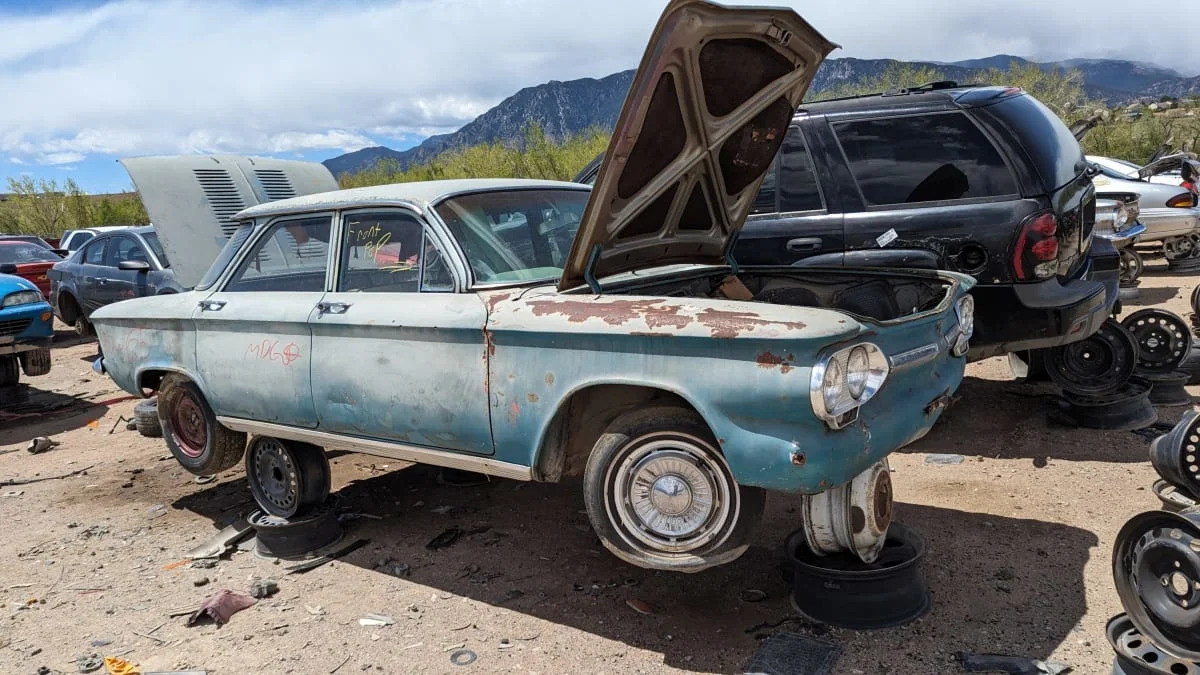
Corvair production came to about 2 million from the 1960 through 1969 model years, and there are still plenty of project Corvairs sitting in garages and driveways, so they’re not particularly hard to find in American wrecking yards nowadays. I’ll run across two or three per year during my junkyard explorations, but finding this many at once at a U-Pull facility is a new experience for me.

The U-Pull-&-Pay employees I asked about these cars told me that a man brought them all in at once and told them that he had quite a few more Corvairs. I’m guessing that this is the result of a Corvair enthusiast with a storage lot purging unneeded parts cars.
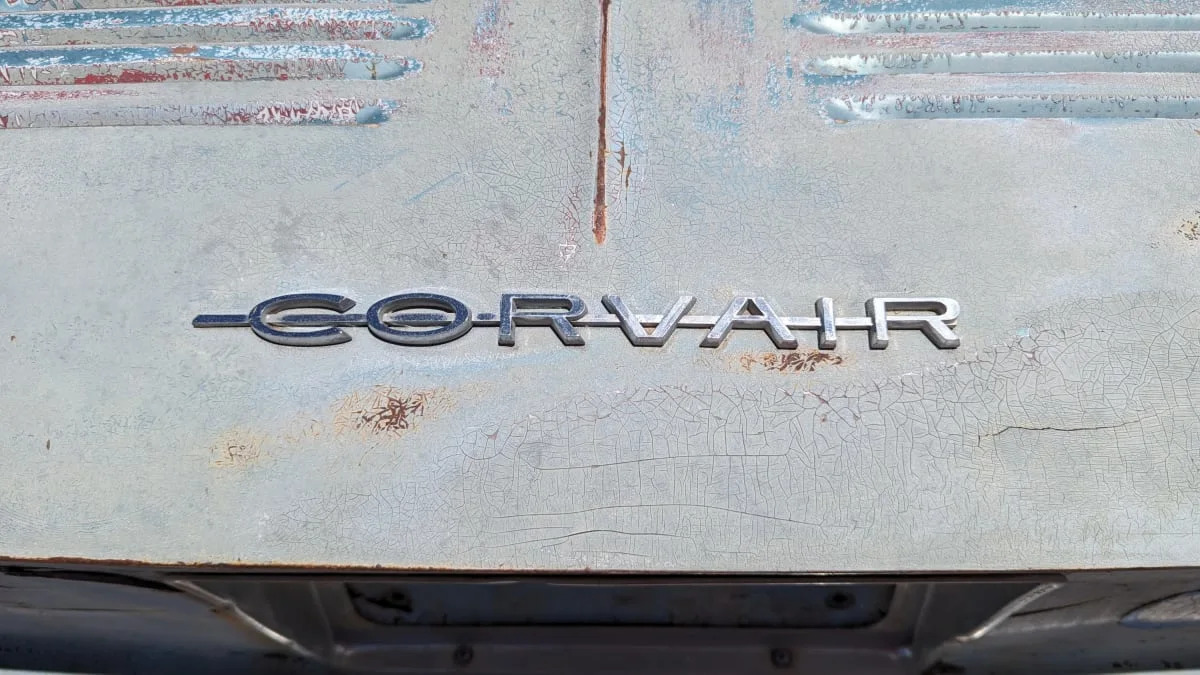
The Corvair, with an air-cooled rear-mounted engine, was a radical design by the Detroit standards of its era and remains the most controversial American car ever made. Sales peaked in the 1961 and 1962 model years, began a gradual decline after that, then collapsed in 1966. Production continued through 1969, but by then hardly anyone was paying attention. Perhaps you blame Ralph Nader, or GM’s clumsy attempts to squash Ralph Nader, or the government regulations inspired by Ralph Nader, or the comfortingly traditional Chevy II/Nova, or even the Renault Caravelle.
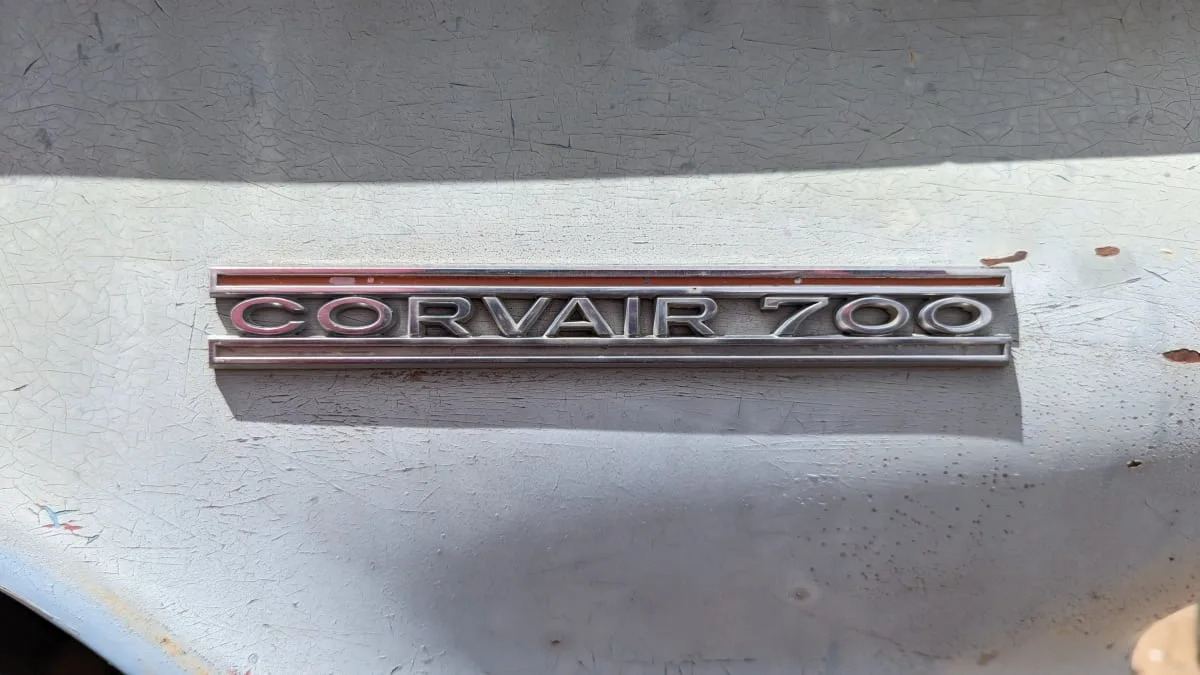
I recommend that you read Aaron Severson’s exhaustively researched and annotated Corvair history — which begins with the development of a small-car concept at GM during World War II — in order to get the full story.
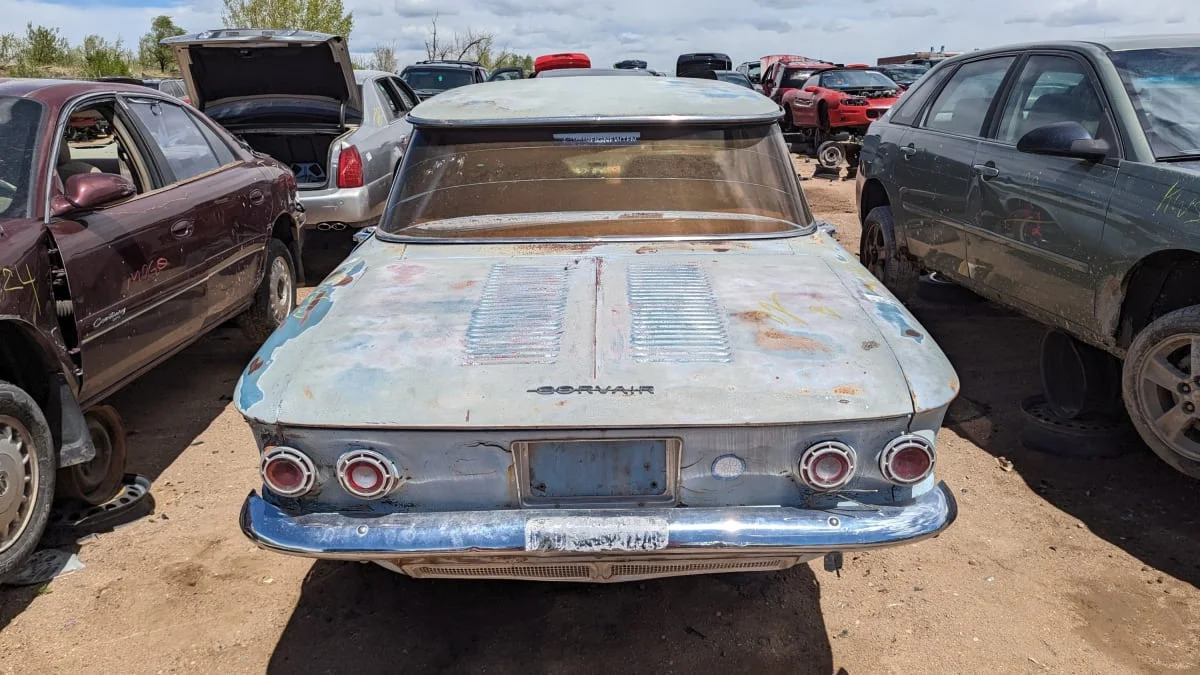
This car was built during at the Oakland Assembly plant in California, where production of the Chevrolet Four-Ninety kicked off in 1916. Oakland Assembly shut down in 1963, to be replaced by Fremont Assembly (which became NUMMI in 1984 and is now the Tesla Factory) about 25 miles to the southeast. The site of Oakland Assembly is Eastmont Town Center today.
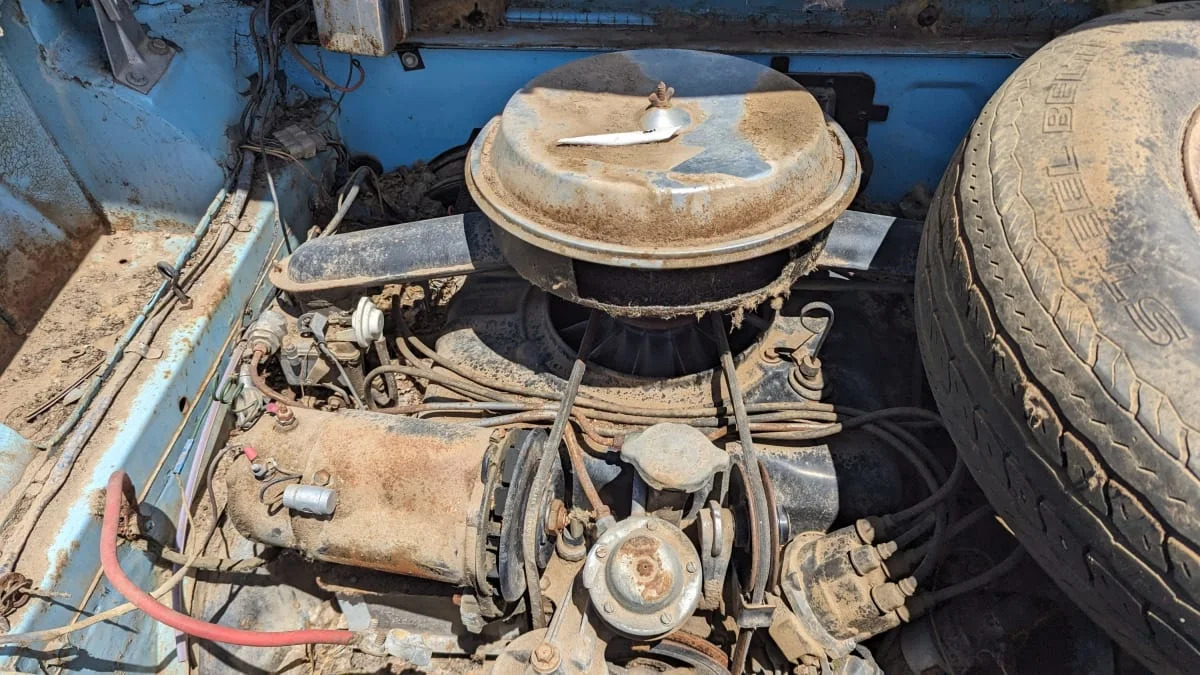
The engine is a 145-cubic-inch (2.4-liter) air-cooled pushrod boxer-six with dual carburetors and the distinctive “around-the-corner” fan belt system that looked funky but worked well. Horsepower was 80 if you got the three- or four-speed manual transmission and 84 on cars equipped with the two-speed Powerglide automatic transmission.
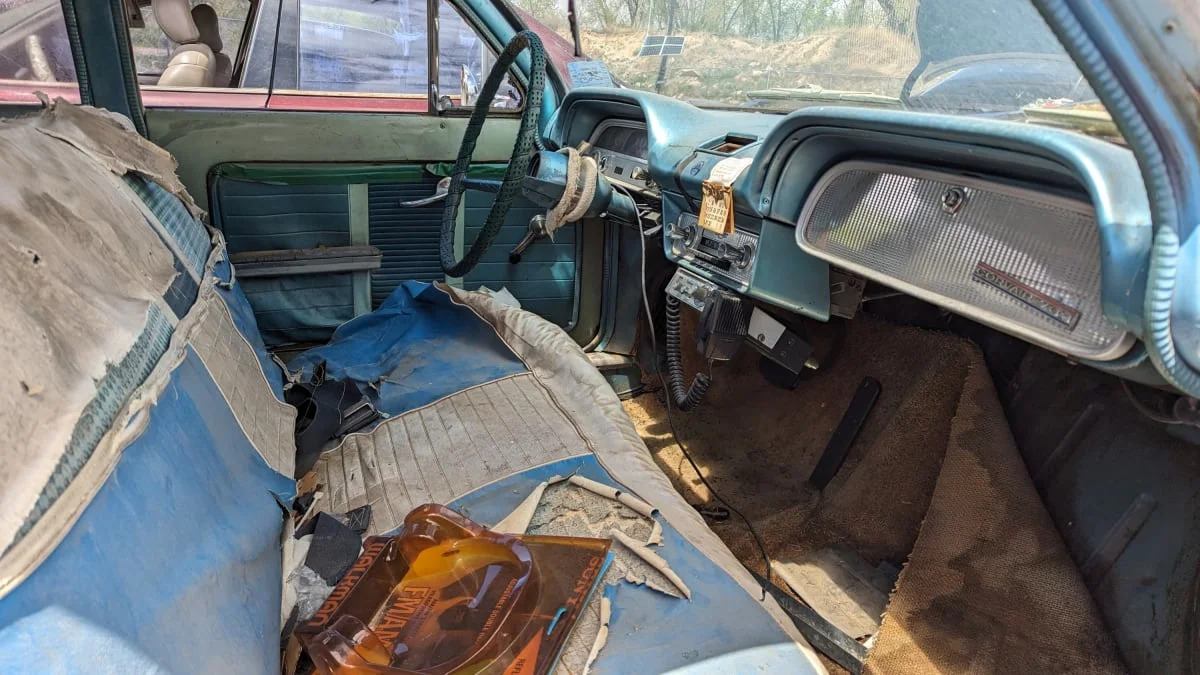
This car does have the Powerglide, which was shifted via a little lever under the dash, to the left of the radio.
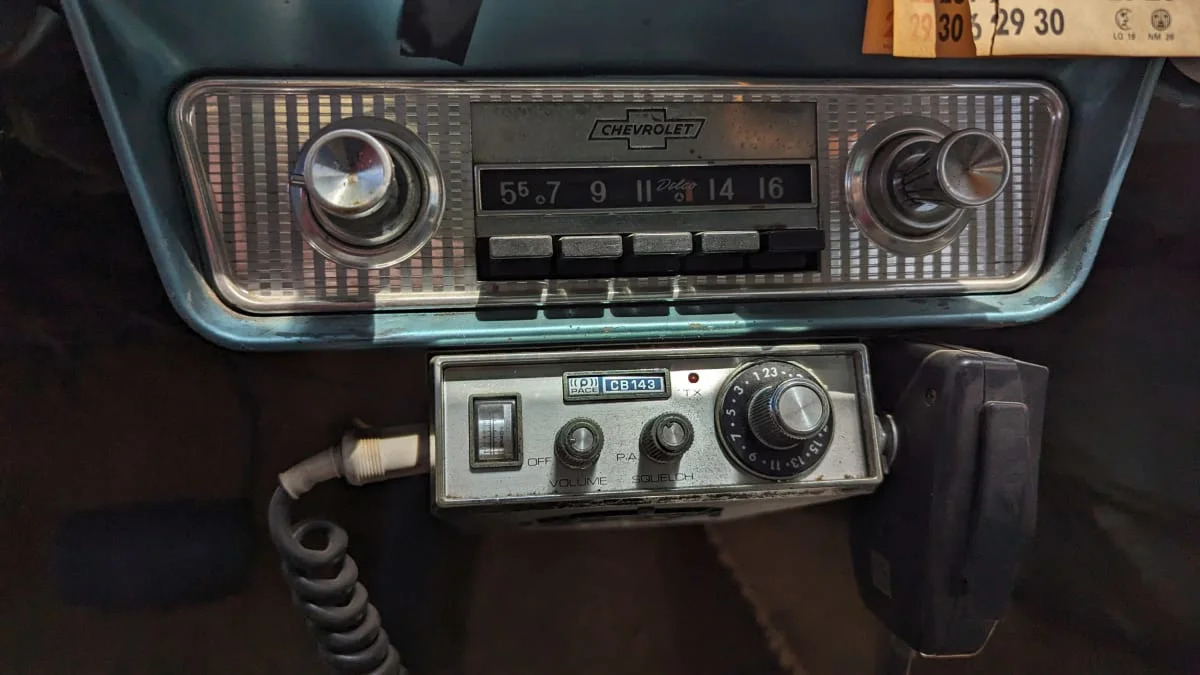
The optional AM-only radio was a $57 option, which comes to about $596 in 2024 dollars (and was worth it in order to listen to the top hits of 1962 on a scratchy mono dash speaker). Note the scary triangle-in-a-circle Civil Defense symbols at 640 and 1240 kHz; those indicated the CONELRAD stations that would give instructions in case Tupolev Tu-95s were on their way bearing thermonuclear bombs.
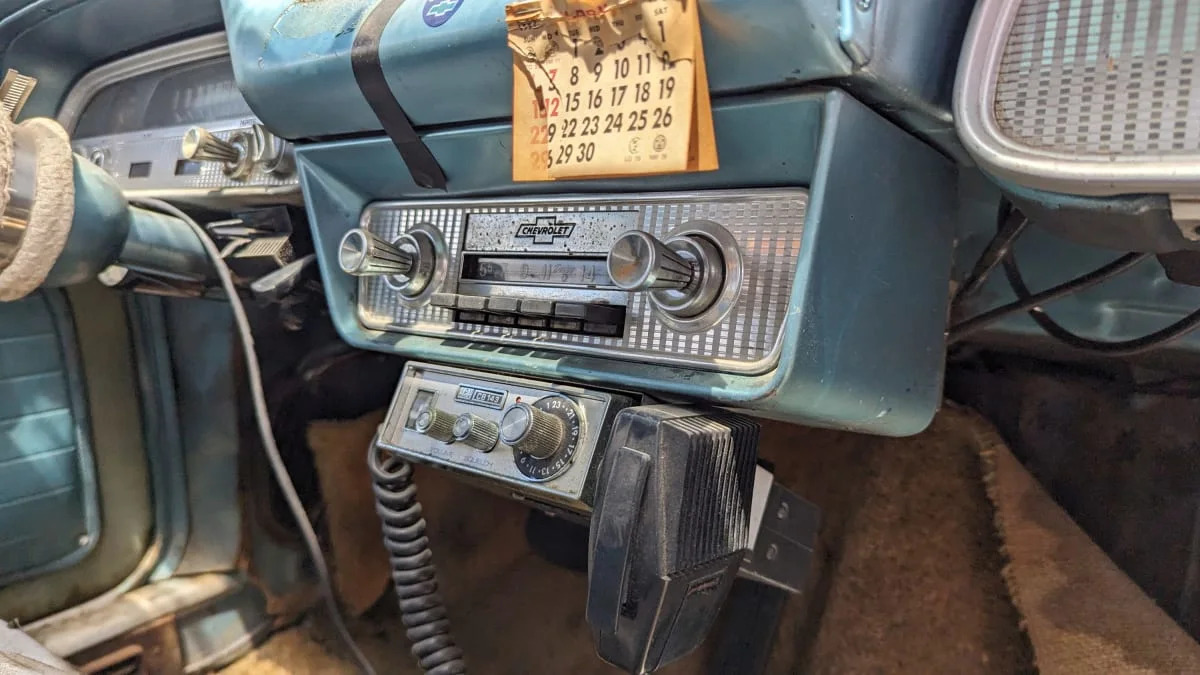
Below the AM radio is a Pace CB-143 23-channel CB radio of mid-1970s vintage. This unit was sold around the time that C.W. McCall’s CB-centric song “Convoy” was #1 in the music charts. By the way, you can download free MP3s of C.W.’s advice to truckers crossing the Rockies on Interstate 70 — called out via mile marker — via his website.
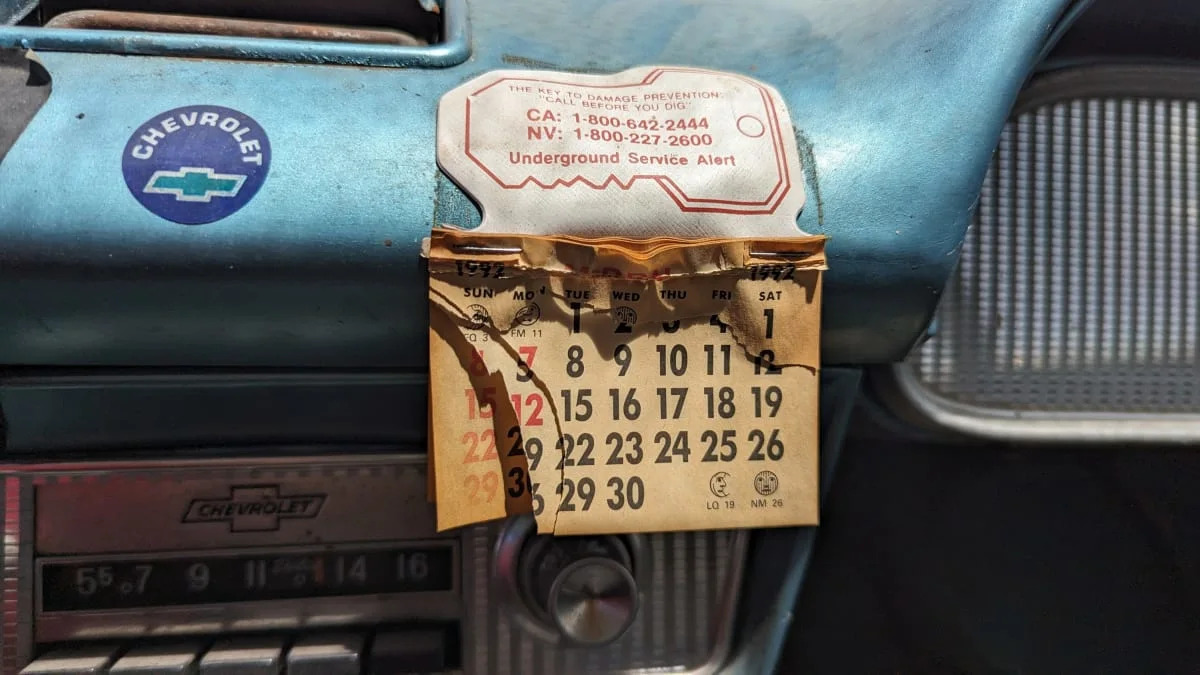
It appears that about three decades have passed since this car last saw regular use, based on this 1992 West Coast Gas magnetic dash calendar. Just by chance, the 1992 and 2024 calendars are the same, including the leap day in February, so a junkyard shopper who gets this one would find its remaining months relevant for current use.
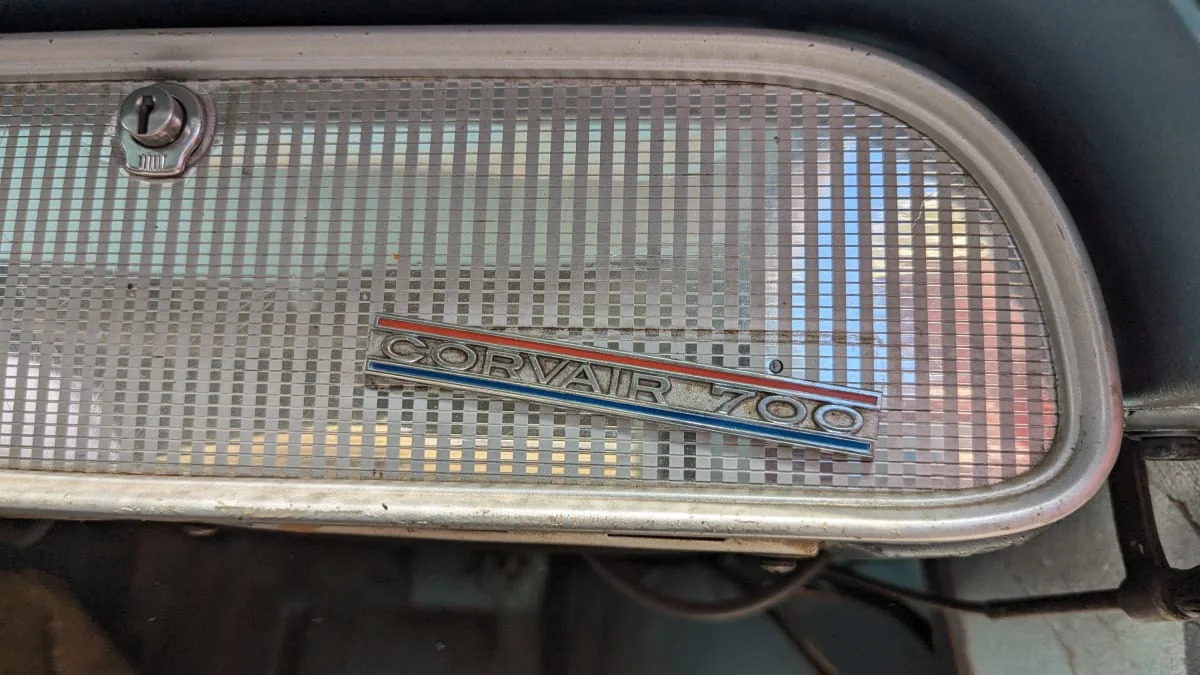
The 700 was the mid-grade Corvair in 1962, sandwiched between the base 500 and the sporty Monza 900. The MSRP for today’s Junkyard Gem with automatic transmission would have been $2,268, or about $23,704 after inflation. A 1963 Ford Falcon Futura sedan with two-speed Ford-O-Matic automatic started at $2,377 ($24,843 in today’s money), but it was a bigger car with a real coolant-fed heater.
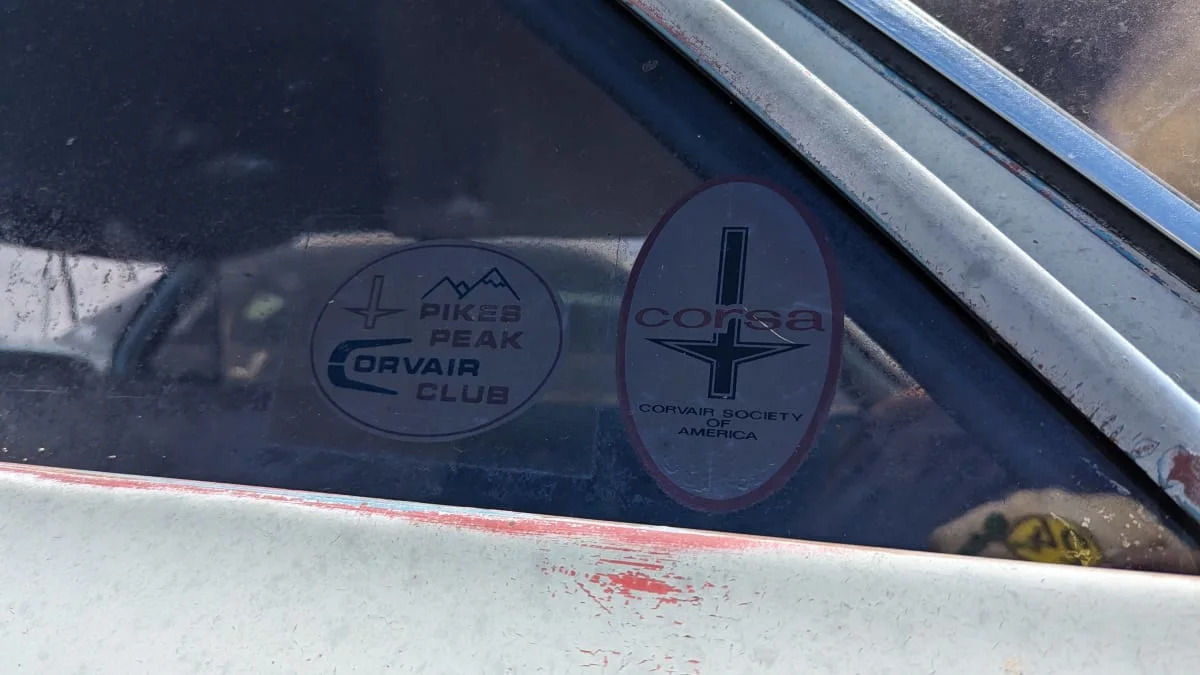
At some point, the owner of this car proudly belonged to both the Pikes Peak Corvair Club and the Corvair Society of America.
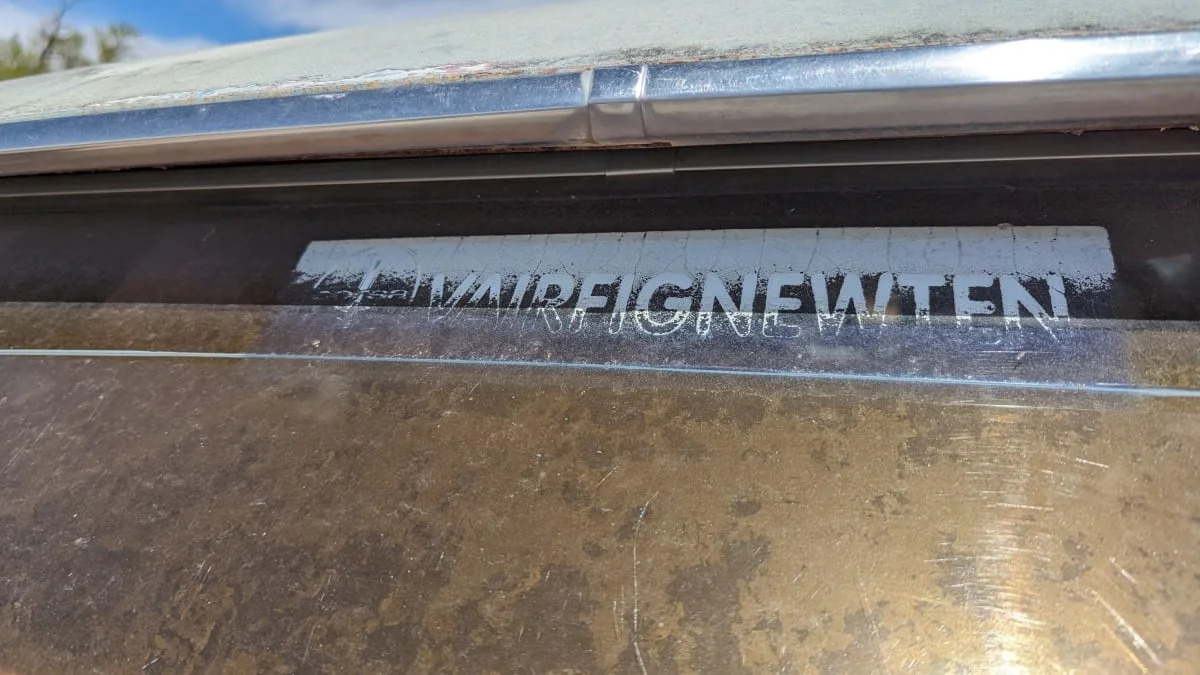
This “VAIRFIGNEWTEN” sticker must be some Corvair Society inside joke from decades past.
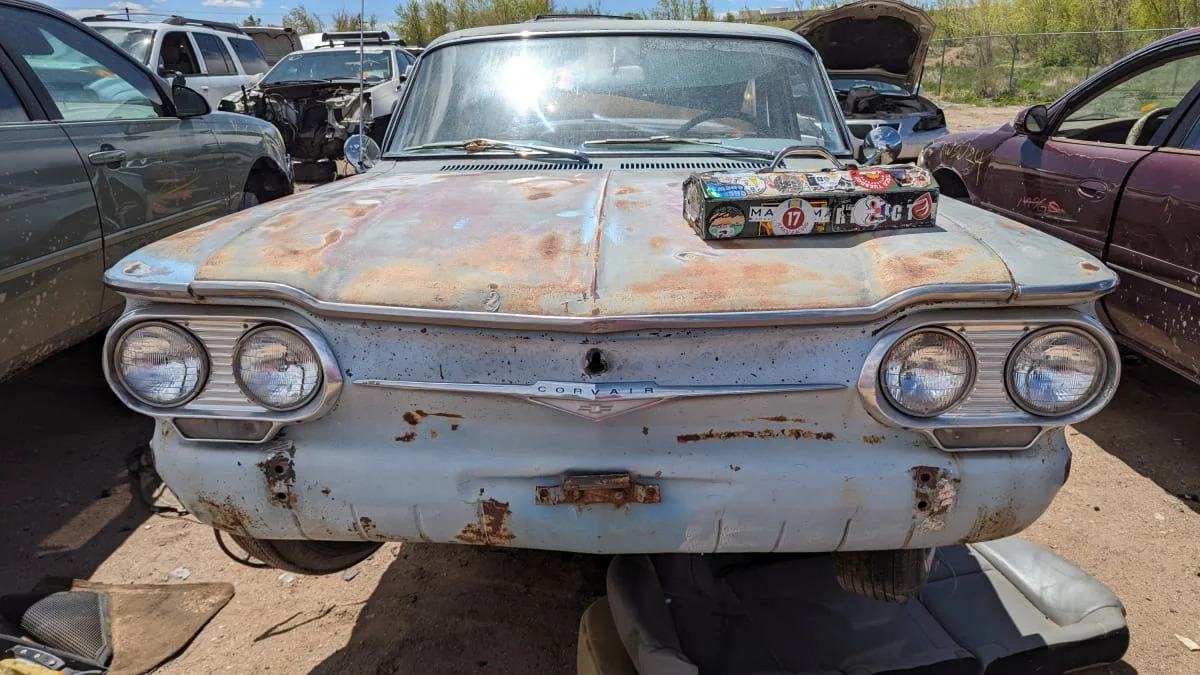
Worth restoring? There’s very little rust-through plus you’d find a lot of parts donors nearby, but I think it would take at least $20,000 to turn this into a $15,000 car.
Claws at trails through the glue-like ooze of Withlacoochie Swamp! Do you think the Falcon (or Valiant) could have handled that?







